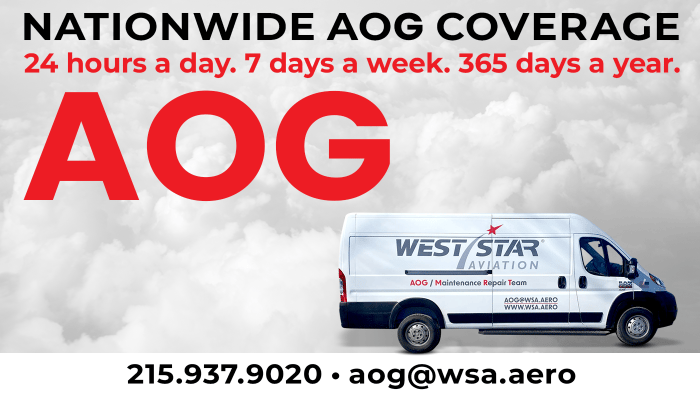|
Bombardier’s newest flagship, the Global 8000, secured Transport Canada type certification today, keeping the ultra-long-range model on track for entry into service before year-end. The Canadian airframer said similar approvals from the FAA and EASA are in the works and will follow “in alignment with delivery requirements.” The successor of the 7,700-nm Global 7500 twinjet, the Global 8000 will have a maximum range of 8,000 nm and set a new benchmark in the business aviation sector with a top speed of Mach 0.95—a figure confirmed last month at NBAA-BACE and up from the earlier anticipated Mach 0.94 Mmo. Additionally, Bombardier yesterday announced a reduced cabin altitude over the original 2,900-foot target at FL410. The altitude is now 2,691 feet at FL410, a mark that the company said is the lowest of any in-production business aircraft. In tandem with the Global 8000 certification, Bombardier has been developing retrofit kits that will enable Global 7500 operators to bring their aircraft in line with the follow-on model, and company president and company CEO Éric Martel has noted significant interest in the upgrade. The company unveiled plans for the speedier, longer-range model in May 2022. At that point, it had already tested the aircraft—a modified Global 7500—at supersonic speeds, a milestone necessary to certify the aircraft with its higher speed. |
|
|
Opening briefs yesterday at CJI Miami 2025 examined how business aviation is evolving after several years of strong demand and investment activity, particularly following changes brought by Covid. Speakers and panelists expressed cautious optimism about where the market stands and what could influence its future growth. Shawn Vick of AE Industrial Partners painted a picture of a market that remains active but more stable than in recent years, with manufacturers, operators, and service providers adapting to normalized aircraft utilization levels and steady backlogs. He said previous “downturns, economic upturns, rapid growth” have all tested the sector, but the Covid era proved unique. “I am much more a believer that it’s acted more as an accelerant on the acceptance of these assets.” Despite economic pressures facing fractional models, “There’s clearly a desire by lots of people to fly private,” George Ferguson of Bloomberg Intelligence noted. “They can’t afford a whole airplane and don’t want to go to charters. They want more availability…The demand is there. It’s not going away.” James Palen of Jefferies Aviation & Aerospace Investment Banking & Capital Markets put capital flows and financing structures under the microscope, saying investor activity remains strong. He noted that investors are increasingly focused on consistent revenue generation and operational data when evaluating opportunities, indicating a more analytical approach to capital deployment. |
|
|
Private flight provider Wheels Up said the modernization of its fleet will be largely complete by the end of 2026 as part of a protracted initiative to achieve profitability. Third-quarter financial results announced today showed slightly higher net losses of $83.7 million for three months ending September 30 as the company absorbed non-recurring modernization expenses. According to the Atlanta-based group, it is set to exceed its early goal for annual cost savings with a new target of $70 million that it aims to achieve by third-quarter 2026. Wheels Up CEO George Mattson said the savings will come from streamlining sales and operations teams, realizing efficiencies from a simplified fleet with fewer aircraft types, and cutting overhead costs. Revenues for the quarter were down 4% at $185.5 million due to the loss of income from its discontinued Connect and Pay-As-You-Fly programs. However, Wheels Up has been encouraged by the early response to the Signature Membership offering it launched on September 3, which represented 20% of block charter sales from then through October 31. At the end of the quarter, the Wheels Up fleet included 19 Embraer Phenom 300s and five Bombardier Challenger 300s. The jets, which feature renewed cabin interiors and high-speed connectivity, are set to amount to half of the fleet by year-end, rising to 80% by the end of 2026. |
|
|
The French chapter of EBAA this week renewed its calls for the country’s government to make changes to the so-called “solidarity tax” it says is unfairly targeting the industry. In a statement issued late Tuesday, the warned that the French tax—which is levied at a much higher rate for private charter flights than for airline services—has caused “unprecedented industrial and competitive decline.” As part of ongoing discussions about the 2026 budget, EBAA France wants the government to at least reduce the tax rate to the same as that charged for business- and first-class passengers on airline flights. It said that rates charged for private charter services can be as much as 30 to 50 times higher. The Paris-based group is also requesting that the government establishes “fair collection mechanisms” so that the tax is levied consistently for both French and foreign operators. It has reported that many charter operators based outside the country are not aware of the tax and that officials are not doing enough to ensure that they pay for flights in and out of French airports, causing a competitive imbalance in terms of costs. According to the association, flight activity for French operators declined by 21.8% in the third quarter, but traffic for foreign operators flying in and out of France increased by 4%. |
|
|
U.S. Transportation Secretary Sean Duffy has ratcheted up his warnings about ramifications of the ongoing government shutdown, now the longest in history, telling media outlets that the delays are only going to worsen as air traffic controllers face a second missed paycheck. This may result in rolling airspace closures as staffing requires, he said, telling a CNBC reporter this week that if the department thought safety was in question, it would shut the whole airspace down. “We’re not there yet,” he added. Duffy reiterated that he wants controllers to come to work and do their jobs, but also said they need to worry about feeding their families. Meanwhile, he has issued a series of tweets on X: “Yesterday 46% of flight delays were due to staffing issues in air traffic control towers. This is UNACCEPTABLE.” Duffy cited the White House in agreement, saying, “It is only going to get worse the longer the shutdown goes and the holiday travel season approaches.” Another tweet from Duffy: “Yesterday saw another horrible record set. 84% of delays were due to staff shortage. If this shutdown doesn’t end now, air traffic controllers will receive another $0 paycheck…Many controllers are not coming to work because they have to find a job that will pay them.” He also warned that the shutdown is hampering the effort to recruit new air traffic controllers. |
|
|
Helicopter dealership Rotortrade has opened its 9,000-sq-ft U.S. helicopter maintenance, repair and overhaul (MRO) facility at Arnold Palmer Regional Airport (KLBE) in Latrobe, Pennsylvania, after receiving FAA Part 145 approval. The regulatory approval process took less than 10 months, something Rotortrade describes as “well ahead of industry averages.” With Rotortrade now able to offer rotorcraft maintenance in the U.S., the Western Pennsylvania MRO reinforces “[its] ability to support operators with comprehensive solutions spanning sales, financing and maintenance,” explained Rotortrade CEO Philippe Lubrano. The facility has already completed work on 15 helicopters, conducting services such as inspections, overhauls, and completions. In anticipation of elevated future demand, Rotortrade has set its sights on what Latrobe MRO general manager Dan Mansfield describes as “aggressive expansion.” This includes enlarging the facility and recruiting more staff to help meet the objectives of its five-year plan. By 2030, Rotortrade anticipates “targeting more than 50 aircraft annually” and “securing EASA bilateral [agreements] for global reach.” The U.S. facility complements Rotortrade’s existing EASA-approved MRO capability in Tallard, France. Both centers are supported by an international network of 15 dealerships. Although Rototrade holds existing agreements with various OEMs—including Leonardo, Airbus, Bell, Safran, and Pratt & Whitney Canada—the company is also “in discussions with key suppliers to become official retailer of their products,” noted Lubrano. |
|
|
A Tuesday afternoon session at CJI Miami 2025 drilled into how aircraft management and operating companies are using mergers and acquisitions to grow, the risks behind those deals, and how to preserve service quality as fleets scale. Panelists from FlyVizor, George J. Priester Aviation, and Airshare described an environment where scale is increasingly necessary—but legacy, culture, and relationships remain at the heart of whether a transaction succeeds. FlyVizor founder Jessie Naor, set the stage with one large transaction experience. “We weren’t aircraft management,” she paused to note, “totally different business model…I’m from the charter broker side, but I do work in this space in a lot of different areas, and it’s a challenge." Andy Priester of Priester Aviation outlined his company’s experience on the M&A side. “Since 2021, we’ve had three transactions where we have acquired legacy businesses in the same market space that we are—both management and charter,” he said. Priester emphasized that deals tend to come to the company because of its long history and reputation. “What we really represent, I think, in terms of an acquirer, is a company that very much plans to lean into and preserve the legacy of each founder,” he said. |
|
|
AIN’s senior-level Corporate Aviation Leadership Summit (CALS) est, our 10th CALS event, is set for January 12 to 14 in Scottsdale, Arizona. Attendees will have the opportunity to discuss the hot topics, strategies, and solutions in business aviation. The summit is attendee-centric, serving as an educational and professional networking platform that connects corporate aviation leaders with peers, industry experts, and solution providers in a relaxed and informal environment. We invite U.S.-based directors of aviation and flight department leaders to apply to attend this all-expenses-paid event as our guests. There are only 50 spots available, so apply today. |
|
|
|
|
|
|
AINalerts News Tips/Feedback: News tips may be sent anonymously, but feedback must include name and contact info (we will withhold name on request). We reserve the right to edit correspondence for length, clarity, and grammar. Send feedback or news tips to AINalerts editor Chad Trautvetter. |
|
AINalerts is a publication of AIN Media Group, 214 Franklin Avenue, Midland Park, New Jersey. Copyright 2025. All rights reserved. Reproduction in whole or in part without permission is strictly prohibited. |















